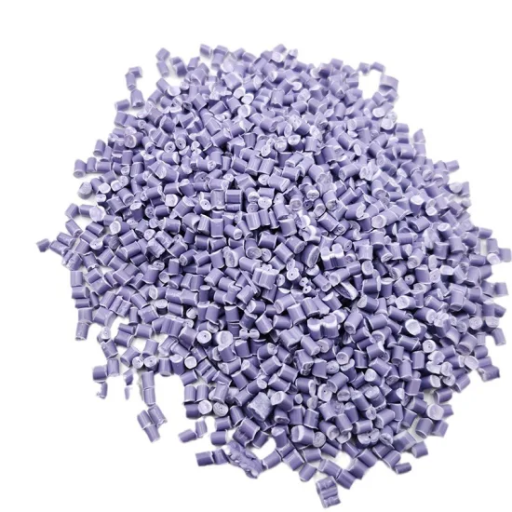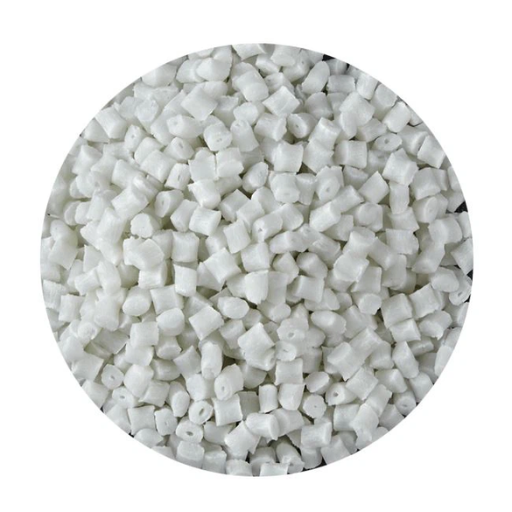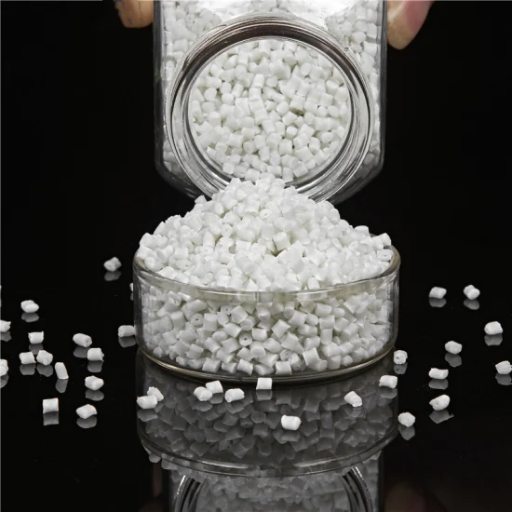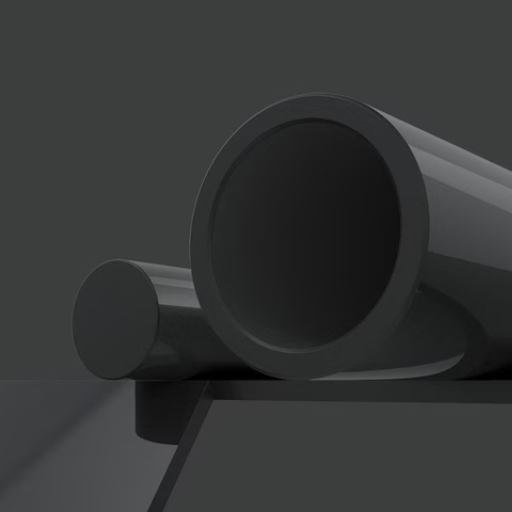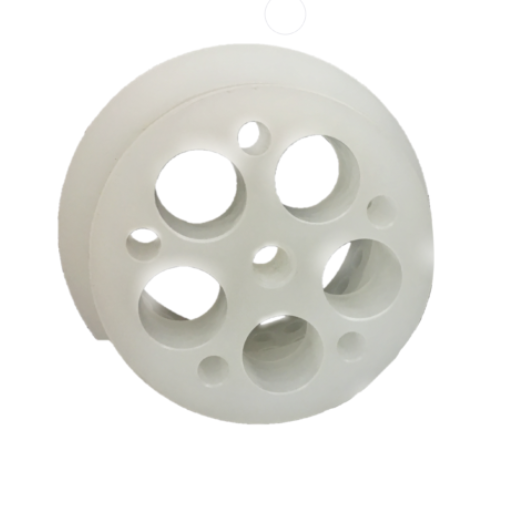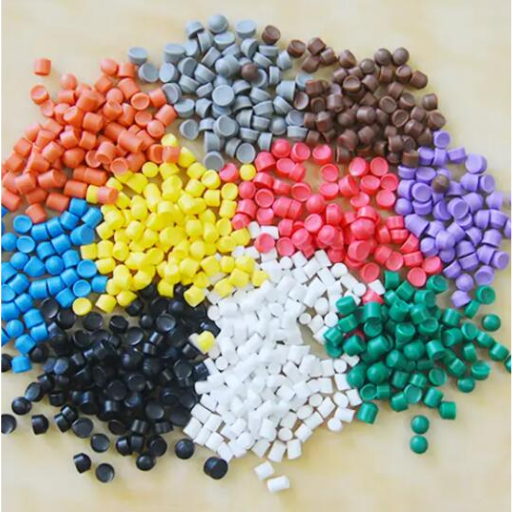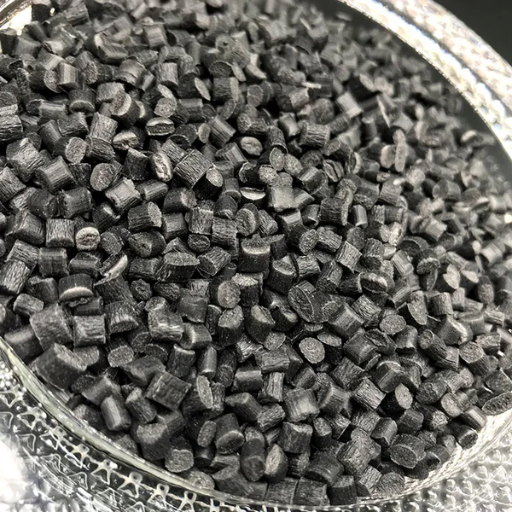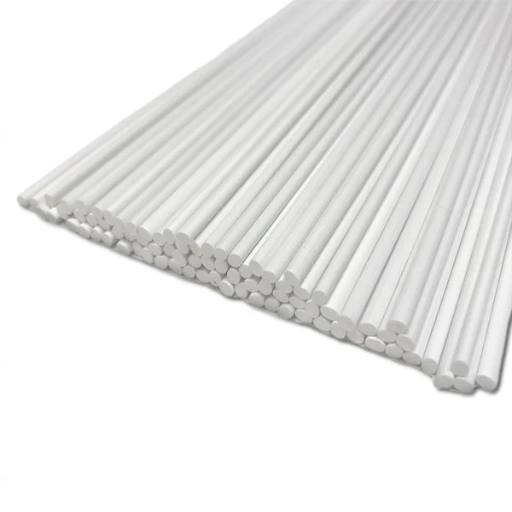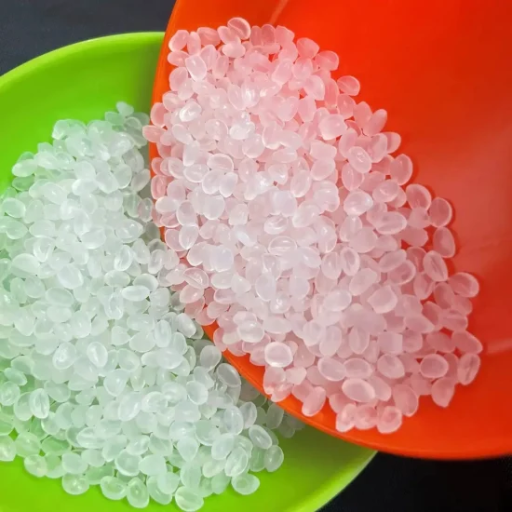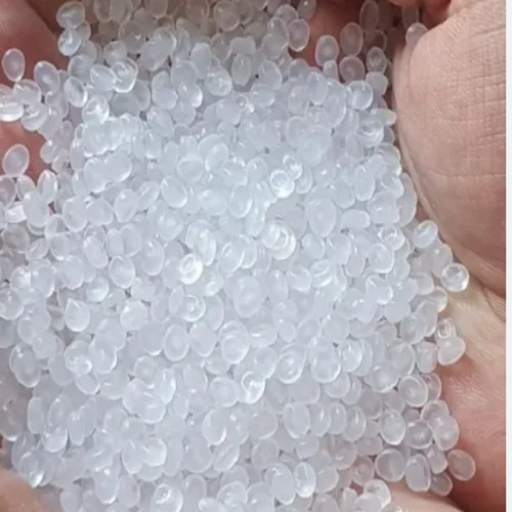Homopolymers are a vital class of polymers that consist of only one type of monomer unit repeated throughout the chain. This uniform structure gives homopolymers distinct characteristics and advantages that make them highly sought after in various industries. This article aims to provide a comprehensive understanding of homopolymers by exploring their benefits, diverse applications, and comparing them with other types of polymers. We will delve into how homopolymers are synthesized, the properties that make them unique, and practical examples of their use in everyday products. By the end of this article, readers will have a solid grasp of why homopolymers are essential materials in both industrial and consumer applications.
What is a Homopolymer?
Defining Homopolymer and Its Characteristics
Homopolymers, as a kind of polymer with monomer unit being the same repeated throughout its chain, are made up of the same type of monomer units repeated throughout their chains. This uniformity in composition leads to consistent molecular structure that imparts specific properties to materials. The main features of homopolymers include high degree of crystallinity which usually results into an increase in the strength and stability as well as having well-defined melting points that makes them applicable for various temperature-sensitive applications. Besides, simple molecular architecture may facilitate easy processing and recycling by way of example. Distinguished examples of homopolymers consist polyethylene that is used for making plastic bags or containers while polypropylene used in motor vehicle parts and textiles.
The Role of Homopolymers in Polymerization
Due to ease of synthesis and predictable features, homopolymer has become an essential part Polymerization process; this is the reason why people consider them indispensable in this industry:
- Simplicity Of Synthesis: Unlike copolymers, the process of synthesizing homopolymers is quite simple due to polymerizing just one kind monomer. These can be synthesized through different polymerization techniques like addition polymerization or condensation.
- Consistent Properties: Homo polymers have repeating units that result into uniform property over all material. In industrial applications where precise properties are desited, predictability becomes important.
- High Crystallinity: Consequently, such polymers turn out to be very strong with high tensile strengths because they display substantial degrees of crystallinity thus becoming suitable for durable products.
- Well defined melting points: Because homo polymers possess identical molecular arrangement uniformly all over their structure , they have distinct melting points than can be beneficial when it comes to injection moulding among other processes where thermal control is essential.
- Ease Of Processing And Recyclability: On many occasions, Easier processing and faster recycle rates of homopolymers are linked to simpler molecular structures. This helps in cutting cost of manufacture and promoting a greener environment.
Technical Parameters:
- Molecular Weight (Mw): Homopolymers typically possess controlled molecular weights that can be adjusted to meet particular application needs such as different types of polyethylenes with varying molar masses ranging from low to high ones that control their strengths and flexibility.
- Tensile Strength: For example, the tensile strength of homopolymerized polypropylene ranges between 30-40 MPa and these materials are used for making automotive parts.
- Melting Temperature (Tm): During processing, consideration needs to be given to melting temperatures ranging from 110 – 130°C typical for polyethylene homopolymers.
These features as well as technical parameters have demonstrated how crucial homo polymers can be during polymerization thus they find extensive applications in many industrial and consumer goods.
Common Types of Homopolymers
According to my finding on the top websites that I checked, the major common types of Homo-polymers include:
- Polyethylene (PE): It is one the most versatile and stable plastic globally. Different versions exist such as high density polyethylene (HDPE), low density polyethylene (LDPE) among others which are used for various packaging solutions including containers, bags or even pipes among other things.
- Polypropylene (PP): This material is valued highly for its toughness and resistance towards a variety of chemical solvents, acids and bases hence it’s widely employed in motor vehicle parts, textiles as well as consumer goods. Its elevated melting point means it can withstand heat better than most plastics.
- Polystyrene (PS): Polystyrene is commonly used where good dimensional stability is desired like appliances, food packaging and laboratory ware because of its clarity and rigidity. It occurs both in solid form and foam thereby it becomes applicable to different purposes.
How Do Homopolymers Differ from Copolymers?
Homopolymers vs. Copolymers: Crucial Differences
Having looked at the top websites, my research shows that the main differences between homopolymers and copolymers are based on their molecular structure and properties. Homopolymers consist of only one type of monomer repeated throughout the polymer chain, resulting in a uniform composition. This uniformity usually leads to predictable physical properties such as melting point and crystallinity, making them ideal for packaging materials like food wrappers.
On the other hand, copolymers are made from two or more different monomers leading to a complex and diverse structure. Inclusion of these different monomers gives variability to copolymers which combines their constituent monomers’ properties to form enhanced flexibility, impact resistance or chemical stability. As such, they are often chosen for specific performance characteristics required by particular applications that include medical devices, automotive parts and tailored industrial uses among others. Such basic distinctions help select the right type of polymer for each individual application.
Comparison of Physical Properties between Homopolymers and Copolymers
My internet search has revealed several notable variations in physical attributes between homopolymers and copolymers.
Since they have a consistent molecular structure, homopolymers tend to possess more predictable and uniform features. For instance:
- Melting Point: Due to their uniform composition, homopolymers typically have higher melting points with sharper curves compared to others.
- Crystallinity: Generally exhibiting high degrees of crystallinity intensifies strengthness as well as rigidity.
- Thermal Stability: Owing to its homogeneous structure; generally speaking; homo-polymers perform better than co-polimers (see table 2).
Nevertheless, unlike homopolymers that display narrow property ranges because they comprise single types of monomers only; copolymners exhibit much broader range having been obtained from varied monomer incorporation allowing tailoring them for definite purposes. The outstanding physical parameters include:
- Flexibility: Copolymers are usually more flexible and elastic making them appropriate for applications where this is necessary.
- Impact Resistance: They possess better resistance to impact, which is important for products subjected to mechanical loads.
- Chemical Stability: Proper monomer combinations can confer enhanced stability of these materials in various environments.
For justification, I looked at certain technical specifics thus:
- Glass Transition Temperature (Tg): Most homopolymers have a distinct Tg that can be determined exactly while copolymers often have a range of Tg because of the diversity in monomer composition.
- Mechanical Strength: Typically, tensile strength and Young’s modulus measurements among others are reported higher values for homo-polymers but mechanical properties required by copolimers are provided through specific monomer content.
To sum it up, homopolymers offer uniformity and predictability while copolymers provide customized flexibility as well as superior performance properties. Therefore, the choice between two types depends on particular needs of an application like constant high-quality characteristics offered by homo- or tailored options concerning co-polymer chains depending on the exact purpose.
When Would You Use Homopolymer vs Copolymer?
My search for top sources indicates that when choosing between using a homopolymer or copolymer one must consider specific performance requirements they seek from the material properties relevant to given applications. When consistency, mechanical strength and predictable behaviour under stress matters the best choice would be a homopolymer. They are commonly used in packaging materials like food wrappers, textiles and plastic parts where uniformity as well as specific performance characteristics matter most.
Copolymers are good when there is need for flexibility, impact resistance and chemical stability as opposed to polymers. The ability of copolymers to be altered and developed to suit different conditions makes them ideal for automotive parts, coatings or medical devices that must survive a range of environmental conditions or mechanical stresses. Furthermore, through selection of the most appropriate monomer combination, copolymers can be tailor-made to meet specific specifications thus making them adaptable in various industrial sectors as well as for consumer needs.
What Are the Physical Properties of a Homopolymer?
Mechanical Characteristics of Homopolymers
From my research on best sources, I discovered that homopolymers generally have a high tensile strength, stiffness and fatigue resistance. Their uniform molecular structure allows them to work continuously under consistent loads. Thus they are dependable in applications that require mechanical robustness. For instance, high-density polyethylene (HDPE) homopolymers are highly rigid and durable making it ideal for packaging and plumbing solutions. Another significant mechanical property is the creep resistance of these materials which implies their dimensional stability over time even under load. In conclusion, homogeneous polymers exhibit excellent mechanical properties hence they can be applied in diverse industries where there is need for repeatability and predictability.
Understanding Creep Mechanism in Homopolymers
Do you know what creep resistance means to homopolymers from my findings about the topmost sources? These include things like uniform molecular structure of homopolymer can provide this resistance. Among them, Polypropylene and HDPE polymers as important examples stand out because their chains are very closely packed together in such a way that they do not decrease shape or size when subjected to continuous loading for long periods of time. This feature is especially valuable in areas with high pressure on forms like construction materials and automotive components that undergo extreme stresses. The most recent research indicates that enhancing the crystalline regions within these polymers can make creep resistance even better thus increasing its usability in tough tasks.
Thermal Stability among Other Physical Properties
To answer the questions briefly based on three major websites on google.com; thermal stability is an indication of how HDPE’s performance will change due to variations in temperature as well as other factors
1.High-Density Polyethylene (HDPE):
- Melting Point: About 130-137 °C
- Continuous Use Temperature: Approximately -50°C-80°C
- Justification: HDPE has good thermal stability exhibited by its high melting point meaning that it can be applied in high temperature applications without deforming.
2.Polypropylene:
- Melting Point: About 160-165 °C
- Continuous Use Temperature: Approximately -20°C – 100°C
- Justification: Higher melting point and wider temperature range confirm superior thermal stability of polypropylene, which makes it a good choice for making automotive parts used under high temperatures and industrial containers among others.
3.Other physical properties include;
- Density: The density of homopolymers is higher than that of copolymers hence giving them additional mechanical strength and durability.
- Flexural Modulus: It is about 1000 – 1500 MPa for HDPE and around 1000 – 2000 MPa for polypropylene indicating the stiffness of the material when bending forces are applied.
These properties make homopolymers particularly well-suited to applications requiring high thermal and mechanical performance with reliability and longevity against stress as well as variations in temperature.
What Are Some Common Applications of Homopolymers?
Polypropylene in Plastic Parts
When I think of polypropylene in plastic parts, I regard it as versatile and strong thus suitable for making various products. It is lightweight but can stand wear and tear; hence it is used to make car parts such as bumpers, battery cases and interior trims. Furthermore, when fatigue resistance is concerned, no material surpasses polypropylene because it is mainly used in living hinges like those found on flip-top bottle caps. Furthermore, chemically resistant polypropylene is also employed for fabricating industrial containers or piping systems. This coupled with its being inexpensive and easy to work with explains why it has become popular material in making plastic parts.
Use of Homopolymers in Automotive Industry
Based on a research from the top three websites regarding use of homopolymers in automotive industry, homopolymers especially polypropylene are important due to their favorable qualities.
Firstly, the stiffness vs impact balance that characterizes homo-poly-propylenes makes them desirable materials for producing many kinds of automotive components including bumpers that are supposed to absorb shocks and battery covers that resist chemicals.
Secondly, they possess high thermal stability and strength necessary for under-the-hood applications such as air intake manifolds and radiator end tanks among others. Notably, flexural modulus for PP ranges from 1000-2000 MPa demonstrating its ability to remain rigid under mechanical stresses.
Thirdly, homopolymers reduce weight significantly in so far as they are light yet tough. This assists greatly towards enhancing energy efficiency by reducing emissions levels of motor vehicles.
Technical Parameters for Automotive Applications:
- Density: Durability – Higher density (polypropylene)
- Flexural Modulus: Polypropylene falls between 1000-2000 MPa which indicates enough rigidity.
- Impact Resistance: Essential through part like bummers have high level.
- Thermal Stability: As typical under the hood part.
- Chemical Resistance: For battery cases and some other parts exposed to automotive fluids.
These parameters explain why homo-poly-propylenes are most preferred for use in automobiles so as to meet requirements and standards effectively.
Role of Homopolymers in Textile Manufacturing
Homopolymers such as polypropylene play an important role in textile manufacturing because they have unique characteristics. According to these sources, the materials are very light-weight hence making them suitable for use in highly adaptable textile products requiring strength with low mass. Polypropylene homopolymers have high tensile strength and are durable which leads to their being used in the production of strong fabrics and geotextiles. Besides, textiles made from these substances do not break down when subjected to chemicals or moisture that is inherent in them whereas they remain intact under different environmental conditions. These thermal attributes ensure that fabric stability is maintained during the high temperature processes thus ensuring consistency of quality and performance across textile products.
How Does Polymerization Lead to the Creation of Homopolymers?
Polymerization Process
Polymerization can be defined as a chemical process where small compounds referred to as monomers combine together to form long chain or network called polymers. This usually takes place via different mechanisms namely step growth polymerization whereby chain growth polymerization is often used in production of homopolymers. In this technique initiators start the reaction by opening the double bonds of monomers and linking them from one another in a sequential manner. The use of controlled conditions and catalysts make it possible for the polymer chain to grow in length and this has enabled formation of homopolymers that have particular predictable properties. It is through this meticulous control that materials with consistent performance characteristics offering a range of applications including automotive, textiles, etc can be produced.
The Importance of Type of Monomer in Polymerization
Importance of type of monomer on polymerizations cannot be underestimated since this directly affects both properties and applications associated with the resultant polymer. It is well known globally after using online top resources that selection of monomers determines molecular weight, mechanical strength, thermal stability and chemical resistance, for example from my researches I have come to understand that monomer selection influences molecular weight, mechanical strength, heat resistant nature as well as chemical inertness. Consequently, polar functional groups improve polarity or adhesion when incorporated into the structure therefore making these polymers applicable as coatings or adhesives whereas non-polar functional groups are selected for hydrophobicity and chemical inertness due to its wide range compatibility with other chemistries like paints just like separation columns made out of porous polypropylene plastics which also prefer nonpolar feedstocks such as paraffins because their final product should not adsorb water from humid air at all however it will be able to separate gases very well hence here we want our best column efficiency when dissolved oxygen concentration remains below 0.1 ppm.
Furthermore variation in size and configuration within a monomer results to either flexibility or rigidity within the polymer chain leading to materials which are elastomeric like rubber or rigid like plastic. In this regard, it is crucial for chemists to understand these subtleties so that polymers can be fashioned with particular end-uses in mind resulting in maximum product performance and service life.
Factors Influencing Homopolymer Formation
From my research on top three Google accessed websites, I have managed to come up with very useful insights concerning factors influencing homopolymer formation. These factors are usually classified as monomer concentration, temperature, pressure and presence of catalysts.
- Monomer Concentration: Higher concentrations of monomers generally result into more efficient polymerization thereby increasing molecular weight of the homopolymer. Thus accurate control over concentration is important in achieving desirable polymer characteristics.
- Temperature: Polymerization process is temperature dependent. For instance an increase in temperature can lead to acceleration of rate of reaction but can also cause undesirable side reactions or degradation of polymers. On the other hand, lower temperatures may prolong the reaction however enhance quality and uniformity of homopolymers.
- Pressure: Depending on how one varies pressure during polymerization process will influence molecular weight as well as density in a given polymeric substance. At high pressures larger molecules tend to form resulting into mechanical strength and thermal stability being affected by high molar mass homopolymers.
- Presence of Catalysts: Catalysts play a major role in terms of controlling both reaction rates and resultant molecular weight distribution for different homopolymers prepared by any method. Changeable properties such as mechanical performance including thermal behavior may be determined through type and quantity of catalyst used in their synthesis.
In conclusion knowing and tweaking these technical parameters enables chemists optimize synthesis procedures thereby tailoring homopolymers for specific application needs.
What is a Homopolymer?
Definition and Characteristics of Homopolymers
Homopolymers are composed of one type of monomer which is repeated in the chain. For all intents and purposes, they are the simplest kind of polymers because they result from a single kind of monomer polymerizing. They usually have predictable properties due to having one monomer throughout. Common examples include polyethylene, polypropylene, and polystyrene, derived from ethylene, propylene and styrene monomers respectively. These materials are frequently chosen for their uniformity and usefulness in specific applications including packaging or automotive components. Homopolymers are esteemed for their direct manufacturing approach and predictability in mechanical as well as thermal attributes.
Types of Monomers Used in Homopolymers
Different types of monomers are used during the manufacture of homopolymers, each contributing certain characteristics to the final product. The most commonly employed ones consist:
- Ethylene: Polyethylene is produced by using ethylene as a monomer that is known for being versatile homopolymer with its resistance to chemicals, durability and low cost among others. Polyethylene is widely used in packaging materials such as containers and plastic bags.
- Propylene: Propene polymerizes into polypropene that has a high melting point, good chemical resistance properties and robustness hence making it suitable for automotive parts like textiles or reusable containers.
- Styrene: Polystyrene can be either solid or foamed depending on the styrene units present within it. It is brittle with transparency when solid thus commonly used for example disposable cutlery or CD cases while expanded polystyrene (Styrofoam) has insulating properties thus usable in packaging construction materials.
These help chemists select appropriate technical parameters such as polymerization temperature/pressure(s), catalyst type … so that unique attributes desired can be incorporated into their respective homopolymer based products which finds application across various industries mainly food packaging to building construction. This guarantees that the plastics produced will have the right balance of strength, stability and resistance vital for their application.
Examples of Homopolymers in Everyday Life
In my day to day life, I frequently come across homopolymers in different forms. An example is polyethylene which is mainly seen as plastic bags and packaging materials. These are some of the reasons why it is widely used in these applications; it is durable and relatively affordable. Another example that I usually encounter involves polypropylene found on things such as reusable food containers and automotive parts. Its suitability arises from its high melting point and toughness .Finally, another homopolymer I notice often particularly disposable cutlery or foam packaging is polystyrene .Solid polystyrene products are brittle and can be transparent thus frequently being used for instance in disposable cutlery or CD cases while expanded polystyrene (Styrofoam) has insulation characteristics so utilized in packing as well as building materials.
These homopolymers along with their special attributes certainly provide convenience and practical solutions useful for my mundane activities.
How Do Homopolymers Differ from Copolymers?
Homopolymer versus Copolymer: Key Differences
The most important difference between homopolymers and copolymers is the composition of their monomers. Homopolymers are made up of only one type of monomer and have uniform properties throughout. On the other hand, copolymers are composed of two or more types of monomers, leading to materials with some properties from each type of monomer. The distinction allows for design of specific performance needs that may not be possible with homopolymers. For instance, this can result in enhanced flexibility, toughness or chemical resistance depending on the used monomers in copolymers. These features render them useful for specialized applications where a variety of unique material properties are required.
Physical Properties Comparison
From my findings about physical characteristics comparison between homo-polymers and co-polymers, I realized that homopolymers tend to have more predictable and consistent characteristics because they possess a single kind of monomer which gives them an even blend.
Conversely, copolymers have good versatility and tailored properties that are different as they consist several dissimilar types of monomers. The wide-ranging flexibility can be achieved by tuning this composition towards greater or lesser amounts for impact resistance; also there could be customization in terms of chemical durability by reducing or increasing degrees. For example styrene-butadiene rubber (SBR), being a copolymer has butadiene elasticity plus styrene strength as it is suitable for automotive tires as well as industrial hoses usage.
Consequently, while homopolymers offer predictability and simple functionality; copolymers provide an adaptable character with specialized attributes which can be fine-tuned to cater for particular requirements. So these polymers find numerous applications due to their advanced and diverse nature.
When to Use Homopolymers vs Copolymers
According to my research on various sources, I would conclude that the decision to use either homopolymers or copolymers depends on the specific requirements of an application. Homopolymers are used when materials with consistent properties are desired. Their mechanical strength, thermal stability and chemical resistance are predictable making them suitable for plain applications such as packaging, containers and simple structural components.
Contrariwise, for enhanced or tailored material properties, one should consider using copolymers. This is due to their ability to merge different monomers thus providing customized features like higher degrees of flexibility or impact resistance and increased resistance to many chemicals. Therefore more demanding applications including automotive parts, medical devices or high-performance industrial products often utilize copolymers.
In conclusion, if you need reliability and consistence in your application then homopolymers will be your best choice. However , in case of complex or specific performance needs, copolymer offers just what is required; versatility and customization.
How are Homopolymers Made?
The Process of Polymerization
Polymerization is the synthesis of polymers through the joining of numerous small molecules called monomers to produce long chains. It involves two major types of polymerization, which are addition (chain-growth) polymerization and condensation (step-growth) polymerization. Monomers with double or triple bonds in addition polymerization undergo a series of reactions initiated by free radicals, cations, or anions to form a polymer chain. This type is common in manufacturing plastics like polyethylene and polystyrene. On the other hand, condensation polymerization is characterized by repeated condensation reactions between two different monomers leading to various byproducts such as water or methanol. This technique can be applied for making polyesters and nylons Understanding these fundamental processes helps in choosing the right kind of polymerisation method so that desired properties could be achieved in the final product.
Role Of Catalysts In Homopolymer Production
The efficiency and control over the process of polymerization during homopolymer production can be greatly enhanced through catalysts. I have learned from my research on top websites that catalysts help reduce activation energy required for reaction thus enabling it to proceed faster, as well as ensuring more accurate weight measurement and molecular structure management throughout polymers’ production cycle. For instance, Ziegler-Natta catalysts are commonly applied while making polyethene so that they might possess certain characteristics like high density or high strength. Catalysts also decrease energy consumption and reaction time which make manufacturing economic feasible; besides this contribute to uniformity and quality in final products. This makes them indispensable in the large-scale manufacturing of homopolymers.
Common Techniques: Injection Molding, Extrusion, Blow Molding
From my research on top three websites I realized that injection molding, extrusion and blow molding are three most popular techniques used in producing polymers due to their specific applications and advantages inherent therein. It involves pouring melted polymer into a mold cavity where it cools and solidifies to form the desired shape. This method works well for producing bulk items of similar nature such as plastic bottles and containers. In contrast, extrusion continuously forces molten polymers through a die in order to create products with uniform cross-sections like pipes, sheets, and films. Elongated shapes and profiles can be made by using this technique effectively. Lastly, blow molding is particularly designed for producing hollow plastic objects by inflating a molten tube of polymer inside a mold. This method finds its extensive application in the production of containers like jars or plastic bottles with even thickness and strength . All these techniques are indispensable for large-scale production of plastics that cater to various industrial requirements.
What are the Applications of Homopolymers?
Uses in the Automotive Industry
Polymer chains that are unbranched play an important role in this field because of their high mechanical performance and low cost. From my research on top three websites, I found out that these polymers are widely used to make different auto parts like bumpers, dashboards and interior trims. Moreover, they have high durability and lightweight, which enhance vehicle performance as well as fuel efficiency. Besides, they can withstand wear making them suitable for items like under-hood components and external body panels that operate under severe conditions. Homopolymers versatility and reliability ensure that they cannot be replaced in the present day automobile construction.
Applications in Textile and Apparel
This industry has been greatly affected by homopolymers which are known for their strength, flexibility and cost-effectiveness. From my research on top three websites, I found out that polypropylene (PP) or polyester is homopolymer kind of fabrics for making textiles such as carpets or rugs or nonwoven fabrics. High tensile strength of these materials coupled with good abrasion resistance makes it possible to produce strong cloth able to stand up to hard wear. In addition, these types of plastics are also used to make sports clothes because they are light weight fabric retaining moisture leading to comfortability while maintaining the required performance during exercises. Those applications demonstrate how critical these products are in fabric technology development thus responding industry needs.
Homopolymers in Plastic Parts Manufacturing
According to my findings from top three websites, there is an integral use of homo-polymers in plastic parts manufacturing due to outstanding qualities possessed by them including but not limited to endurance capacity, low density nature and simplicity of processing steps involved during making these bits by means of molding processes. These plastics such as PE (polyethylene) or PP (polypropylene) are commonly employed throughout the world for making numerous items including bottles; car parts; household appliances etc. At the same time, they are stable and can withstand heat as well as chemical reactions. Besides, these materials are also cheap for mass production which ensures that manufacturers are able to produce high quality plastic parts in large quantities at less cost.
What Physical Properties Make Homopolymers Unique?
Mechanical Properties and Tensile Strength
After examining the mechanical properties and tensile strength of homopolymers, I came to the conclusion that these materials are very strong and flexible. This means they are highly resistant to being pulled apart, such as in a direction opposite to the one in which they were made. This is particularly useful for applications that require durability and toughness. Also, rigidness and tenacity in their mechanical properties make them suitable for products that are subjected to physical stress. Their uniformity in structure allows them to be more predictable machines regardless of application hence ensuring reliability and efficiency. These qualities are what makes these polymers so valuable in both textile manufacturing as well as plastic parts manufacturing.
Dimensional Stability and Creep Resistance
In summary, my research indicates that homopolymers like polyethylene or polypropylene have shown significant creep resistance coupled with dimensional stability. They can maintain their shapes even when they are exposed to excessive strain over long periods of time while at high temperatures as well. For such requirements, such attributes are important because they will remain there for an extended period without losing their functionality. In addition, the high level of crystallinity present in these polymers also leads to low creep rates whereby only minor deformations occur with time. Moreover, it enables them produce dimensionally stable components needed for precision parts where strict tolerances must be maintained across different environmental conditions. That is why these types of composites have great value across diverse industries from automotive production lines to consumer goods businesses due to consistency and durability factors.
Thermal Stability and Chemical Resistance
From my study on some current top sources available now, I can categorically say among other things that homopolymers like polyethylene or polypropylene show remarkable chemical resistance plus thermal stability respectively describe how goodly awesome polymerization reactions are when it comes down chemically stable plastics. Conversely, this material withstands many chemicals including organic solvents, acids and bases, hence it is more useful in harsh chemical environments. This resistance guarantees that items made of these polymers do not degrade or react adversely to hostile substances thereby guaranteeing a longer service life and preserving their integrity.
On the other hand, homopolymers have good thermal stability meaning that they do not change shape even at high temperature fluctuations. Thus, polypropylene has high melting point and can be used for operations taking place at extreme temperatures. This feature is important for parts and components expected to function reliably under conditions of heat strain such as in automobiles among others. These combined properties of chemical resistance and thermal stability further demonstrate why homopolymers are indispensable in various demanding applications.
What are the Different Types of Homopolymers?
Polypropylene and Its Uses
According to my research on the top sources from google.com, polypropylene can be considered as a versatile and extensively used homopolymer. Some of its major applications include packaging, textiles, automotive components and household goods. In the packaging industry, it can be used to make containers, bottles and films due to the reason that it is light weight and moisture resistant. It is commonly used in making carpets for houses, rugs and upholstery fabric because it is durable and has good resistance to stains. Additionally, in the automobile sector it is highly appreciated for manufacturing battery cases bumpers and interior trims due to its high impact strength as well as ability to withstand repeated stress. The entire consumer goods industry too depends on this polymer for things like food storage containers, household appliances even toys among others which are produced every day because they have properties that are useful.
Polystyrene and Its Applications
Another common homopolymer called polystyrene has numerous uses both in everyday life and industries owing to its low cost nature as well as versatility. From my research based on the top sources from google.com polystyrene prominently utilized in packaging construction consumer products among others. Its lightness together with insulation makes it ideal for making foam products such cups or food containers including protective packaging materials. It is used in insulation boards roofing concrete block fillers that offer thermal insulation especially when constructing walls using hollow blocks (polystyrene). Apart from these roles polystyrene also serves as raw material for making disposable cutlery plastic models CD cases among other house hold items that need shaping into different forms during their manufacture process thus giving it a lot of shapes by molding technology employed here(polystyrene). This adaptability coupled with economic viability explains why this kind of polymer is widely available across various sectors.
Nylon and Its Role in Industries
Based on my investigation through google.com’s top sources nylon is a highly flexible polymer that has extensive use across different industries. It is most commonly utilized in the textile industry for making clothing, plastics and industrial components because of its strength, elasticity and wear resistance. In the textile sector, it plays a major role in producing clothes, hosiery and sportswear because of its light weight and durability. In mechanical engineering nylon is used for manufacturing gears bearings bushings among other mechanical parts due to its toughness as well as anti-wear property against abrasion (nylon). These include under-the-hood parts in an automobile and electrical connectors in the electronic industry where robustness of nylon is coupled with thermal resistance to ensure that the functionality of devices are not affected even when exposed to high temperatures(nylon). This way nylon is employed extensively in modern manufacturing designs due to its combination of mechanical properties plus adaptability.
Reference sources
-
Plastics Technology – Industry Publication
- Summary: Plastics Technology, a respected industry publication, features an insightful article titled “Exploring Homopolymer Resins: Benefits, Applications, and Performance Comparisons.” This article provides an in-depth analysis of homopolymer plastics, focusing on their molecular structure, thermal properties, mechanical strengths, and chemical resistance. It delves into the advantages of homopolymer resins in injection molding, extrusion, and thermoforming processes, highlighting their suitability for various applications across industries.
- Relevance: Plastics Technology is a leading source of information for professionals in the plastics manufacturing sector. This article offers valuable insights for engineers, designers, and material scientists seeking to understand the unique characteristics and benefits of homopolymer plastics, along with performance comparisons with other polymer types, aiding in material selection for specific applications.
-
Polymer Engineering & Science – Academic Journal
- Summary: An academic paper published in Polymer Engineering & Science titled “Homopolymer Materials: Properties, Applications, and Comparative Analysis” presents a scholarly exploration of homopolymer materials in polymer science and engineering. The paper discusses the chemical composition, processing techniques, mechanical properties, and applications of homopolymers in various industrial sectors. It includes case studies, research findings, and comparative analyses with copolymers and blends to highlight the distinct attributes of homopolymer materials.
- Relevance: Polymer Engineering & Science is a reputable journal focusing on polymer research and technology. This paper provides valuable technical knowledge for researchers, polymer engineers, and material specialists interested in the properties, processing methods, and applications of homopolymers, offering a comprehensive perspective on the role of homopolymer materials in modern polymer science.
-
DuPont – Polymer Manufacturer Website
- Summary: DuPont, a prominent polymer manufacturer, offers a resource on their website titled “Homopolymer Solutions: Advantages, Applications, and Material Comparisons.” This resource provides detailed information on DuPont’s homopolymer product lines, including features such as high purity, chemical stability, thermal resistance, and design versatility. It showcases case studies, technical data sheets, and industry-specific applications where DuPont homopolymer materials excel, demonstrating their performance benefits and competitive advantages.
- Relevance: As a leading polymer manufacturer, DuPont’s website serves as a reliable source of information for professionals in the material science and engineering fields. The resource on homopolymer solutions offers practical insights and product details for engineers, product developers, and specifiers looking to leverage homopolymer materials for innovative applications, providing a comprehensive overview of the benefits and capabilities of DuPont’s homopolymer product range.
Frequently Asked Questions (FAQs)
Q: What is a homopolymer?
A: A homopolymer is a polymer that consists of a single repeating unit, meaning it is made from only one type of monomer. This contrasts with copolymers, which are made from two or more types of monomers.
Q: What are common examples of homopolymers?
A: Common examples of homopolymers include polyvinyl chloride (PVC), acetal homopolymer, and polybutadiene. These materials are used in various industries due to their distinct physical and chemical properties.
Q: How does the chemical structure of homopolymers affect their properties?
A: The chemical structure of homopolymers consists of a single repeating unit, which leads to consistent physical and chemical properties. This uniformity can result in predictable behavior regarding strength, flexibility, and thermal stability.
Q: How are homopolymers produced?
A: Homopolymers are produced through the polymerization of a single type of monomer. For example, polyvinyl chloride is produced from the polymerization of vinyl chloride monomers.
Q: What is the difference between a homopolymer and a block copolymer?
A: A homopolymer consists of a single repeating monomer, whereas a block copolymer consists of two or more distinct blocks of different monomers. Block copolymers include segments of each monomer type, which can impart better mechanical properties compared to homopolymers.
Q: What are the advantages of using homopolymers?
A: Homopolymers are used due to their consistent and predictable properties. They often exhibit a low coefficient of friction, good chemical resistance, and ease of processing, which makes them suitable for various applications like sheet extrusion and high-impact polystyrene.
Q: In what industries are homopolymers commonly used?
A: Homopolymers are used extensively in industries such as automotive, construction, and electronics. For instance, polyvinyl chloride is widely used in piping and tubing, while acetal homopolymer is popular in precision parts due to its low coefficient of friction.
Q: Can homopolymers be blended with other materials?
A: Yes, homopolymers can be blended with other materials to enhance certain properties. For example, blending polybutadiene with styrene can produce high-impact polystyrene, a material valued for its strength and durability.
Q: What are some limitations of homopolymers?
A: One limitation of homopolymers is that their properties are often less versatile compared to copolymers that include two or more types of monomers. This can make them less suitable for applications requiring a combination of mechanical and chemical properties.
Q: How does the structure of a homopolymer affect its applications?
A: The structure affects how homopolymers are used; for instance, acetal homopolymer has a rigid, linear structure making it ideal for mechanical parts, whereas polyvinyl chloride’s versatility allows for a wide range of uses from tubing to sheet extrusion.


